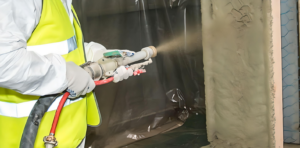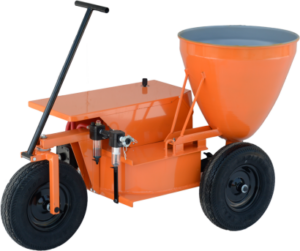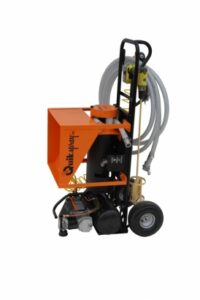 Fireproofing a building’s exterior or replacing degraded fireproofing materials is a serious matter. The right fireproofing material can protect your worksite, building, or other surface from heavy flame damage for years to come, as well as withstand weathering or other damage.
Fireproofing a building’s exterior or replacing degraded fireproofing materials is a serious matter. The right fireproofing material can protect your worksite, building, or other surface from heavy flame damage for years to come, as well as withstand weathering or other damage.
But just what material is used for fireproofing, and are there major differences between them? Read on for more information about common fireproofing materials.
Common Fireproofing Materials
Throughout history and up to the modern day, various materials have been used for fireproofing purposes.
Concrete is a great example, and one of the most historically common fireproofing solutions. That’s because it is inherently fire resistant due to its low thermal conductivity and noncombustible nature. Concrete is perfect for fireproofing walls and roofs alike.
However, there’s also stucco: a plaster material that has been used for many centuries for both structural protection and artistic goals. Stucco is nowadays made of sand, lime, and Portland cement, which result in excellent fire-resistant qualities when combined. Stucco is also a favorite because it can cover practically any structural material for a building, like brick or wood.
Gypsum is another common fireproofing material. Gypsum is frequently used as a sheath to give structural materials, particularly structural supports, good fire-resistant ratings. Gypsum can be made into a board material called drywall, which has a layer of gypsum placed between two thick sheets of paper.
Brick, of course, is also fire resistant, though you cannot pump brick onto a wall! Brick is inherently fire resistant as each brick is made in a kiln. Brick walls are held together with mortar, so they’re naturally resistant to fire hazards and other dangers.
When it comes to applying fireproofing materials to a wall or roof with a pump, concrete and stucco are common, effective options. Other common fireproofing materials include:
- Slag wool
- Vermiculite
- Carbon black
- Mica
- Bauxite
QuikSpray Fireproofing Pumps
QuikSpray offers a pair of quality fireproofing pumps that can be used to apply fireproofing materials ranging from concrete to stucco and more in no time.
 Our Carrousel Pump is the larger, more powerful of the two options, featuring constant torque variable speeds of 110 or 220 vac, powered by 50 or 60 Hz electric drive. The industrial compressor combines with clear and reinforced material lines with special flow-through Q & Q couplings, helping to reduce pumping pressure and increase pumping volume. If you need a lot of fireproofing materials applied quickly, the Carrousel Fireproofing Pump is a great choice.
Our Carrousel Pump is the larger, more powerful of the two options, featuring constant torque variable speeds of 110 or 220 vac, powered by 50 or 60 Hz electric drive. The industrial compressor combines with clear and reinforced material lines with special flow-through Q & Q couplings, helping to reduce pumping pressure and increase pumping volume. If you need a lot of fireproofing materials applied quickly, the Carrousel Fireproofing Pump is a great choice.

Alternatively, you can opt for the QuikSpray Mini Pump, available in manual, electric on a table, and electric on a dolly cart models. This is the perfect mobile choice if you need to apply fireproofing materials to hard-to-reach places or if the Carrousel is a little too large to get to a worksite.
Contact QuikSpray Today!
When it comes to applying fireproofing materials to walls, roofs, or floors, QuikSpray’s fireproofing pumps are your best bets to get the job done on time and on target. With our fireproofing pumps, your workers will
accomplish their tasks in record time and your clients will always be satisfied. Check out our fireproofing pumps today!
